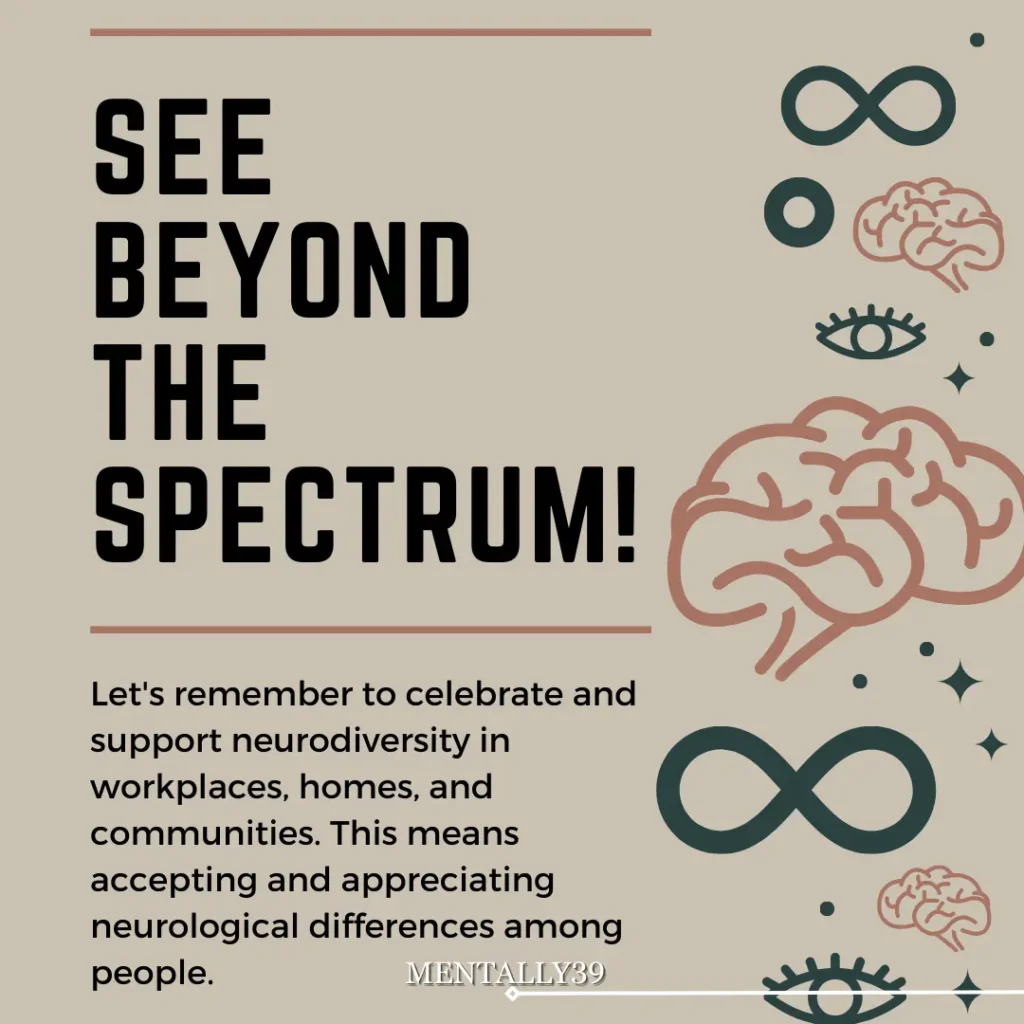In my work, I deal with a lot of students with autism spectrum disorder, and autism is a unique and complex neurological condition that can present special challenges, especially when it comes to managing emotions and sensory experiences. One of the most challenging aspects of autism for many people is the experience of meltdowns – intense episodes of overwhelming emotion, sensory overload, and loss of control (tantrums). When I say that, most people will think of an autistic child. But what about the adults?
The reality is that adults with autism can also struggle with these strong emotional experiences. Understanding and supporting adults when they experience meltdowns is critical for their well-being and the loved ones and caregivers who support them.
Helping them manage their sensory experiences makes daily life easier for them. We can find out what triggers a meltdown or make spaces more calming. This article will discuss how we can support an autistic adult during a meltdown. With the right care, we can reduce the frequency and intensity of these breakdowns.
Key Takeaways
- A deeper understanding of autism meltdowns is vital for providing effective support.
- Individuals with autism may be triggered by sensory overload.
- Support for individuals with autism should include strategies for managing autism meltdowns that are customized to each person’s triggers and needs.
- Identifying patterns and potential triggers can empower adults with autism to anticipate and prepare for situations that may lead to a meltdown.
- Communication, structure, and predictability play significant roles in helping autistic adults gain control during overwhelming situations.
- Creating a safe environment and fostering understanding among care networks can improve response and intervention during meltdowns.
Understanding Autism Meltdowns in Adults
Living with autism means facing challenges that others may not understand. This includes autism meltdowns and tantrums, which are intense responses to overwhelming sensory or emotional input. It is not easy for someone on the spectrum to handle this. They may lose control in ways that are different for each person.
To outsiders, a meltdown might look like a big, unexpected reaction. But it’s not just about behavior. An autistic meltdown is a reaction beyond the person’s control, happening when stress gets too high and their usual ways of coping don’t work anymore.
To better understand autism meltdowns in adults, it’s key to notice early warning signs. These might be things like being more sensitive, getting upset easily, or feeling more anxious. Spotting these signs early can help in preventing a meltdown.
Understanding meltdowns is like understanding a safety valve on a water heater; they happen when there’s no more room for stress.
- Increased anxiety may signal that an individual feels the challenges are stacking up beyond their capacity to handle them.
- Restlessness could indicate a growing discomfort with the environment or the social dynamics at hand.
- Hypersensitivity to sensory stimuli can quickly become overwhelming, contributing to loss of control.
It’s important to remember that helping someone during a meltdown means more than stopping the episode. It’s about empathy and knowing what triggers them. Understanding their needs allows us to support them without making things worse.
Managing an autistic meltdown needs patience and awareness. It’s about supporting the person in a difficult moment. Together, we can find ways to approach these challenges with kindness and respect.
Common Triggers for Autism Meltdowns and Prevention Strategies
For many somebody with autism, everyday experiences are like navigating through an ever-changing maze. Sensory overload is a top trigger for an autism meltdown. Loud noises, crowded places, and even harsh lighting can be too much. It’s important also to notice that changes in routine can make anxiety spike.
Finding out what causes these meltdowns is key to making life more predictable for them. Adults may feel overwhelmed by sudden changes in their daily plans or unexpected social situations. This is why making their surroundings as familiar and consistent as possible is important.
To stop breakdowns, we need to use a variety of strategies. Understanding the wide range of sensory issues is the first step. Then, we can introduce support tailored to their specific needs. Here are some strategies that have proven effective:
- Create calming spaces in homes and workplaces where soft lighting and quiet can help mitigate sensory overload.
- Utilize visual aids like calendars and planners to emphasize predictability and structure, reducing surprises that may result in anxiety.
- Engage in routine check-ins to gauge comfort levels and emotional stress, particularly preceding or following transitions and activities known as common triggers.
- Make it easy for people to take breaks or ask for help so they feel more in control. This will help them become more independent and confident.
When we take the time to understand the subtle nuances of sensitivity and consistently support them, we can create a safe and comfortable environment that helps prevent meltdowns. It’s important to empathize and be mindful of our actions in order to promote well-being and prevent distress. Setting up an environment that is both accepting and adaptable helps individuals with autism feel safer and more resilient.

Strategies for Managing Autism Meltdowns
Managing meltdowns in those with autism requires a special approach. It’s about understanding their unique needs and making a safe space. Learning how to calm and prevent stress buildup is a first step.
Knowing what triggers an autistic meltdown is essential. It helps caregivers create better environments. For example, a safe place with fewer stressors can be a calm haven. Here, people can learn how to handle their feelings better.
- A sensory retreat is more than just a quiet spot. It’s filled with things that help relax, like soft lights, comfy textures, and calm colors.
- Calming strategies might be deep breaths, mindfulness, or favorite songs or activities.
- Visual aids help with clear communication and adding structure. They reduce anxiety during changes.
- Learning emotional regulation techniques helps individuals control their feelings. Meditation and relaxation exercises are useful tools.
We need to create supportive spaces that don’t isolate. These places give a base for handling sensory and emotional challenges.
A full approach to meltdown management makes people with autism feel supported. Good communication and adaptability help meet their needs sensitively.
“Managing meltdowns well means offering coping tools and environments that meet the autistic community’s needs.”
Working together, adapting, and learning about managing autism meltdowns empower individuals. Such efforts form a network that uplifts and helps them navigate life’s challenges.
Support and Intervention
Supporting individuals with autism requires a smart, gentle approach. Explore useful tactics, from direct sensory aids to communication help. Autism is unique; find what works for you or your friend to help reduce anxiety. It’s important to offer sensory support and create a structured environment. Both help reduce stress that may cause meltdowns.
Active listening and nonjudgmental communication are key to effective support. They help bring back calmness during stressful times. Also, allowing individuals to express themselves is vital. It helps create coping strategies that fit their needs.
- Find personalized coping strategies that match each autistic adult’s likes.
- Provide sensory management tools, like adjustable lights or quiet areas.
- Create consistent routines for reliable daily support and intervention.
- Give mindfulness or physical exercises to help in stressful situations.
Our aim is not just helping during meltdowns. We also want to prepare autistic people to deal with stress better.
It’s very important to be patient and empathetic when dealing with autism meltdowns. Showing compassion and understanding can really help autistic adults as they cope with their own unique life experiences.
Long-Term Approaches to Reducing Meltdown Frequency
Consistency and understanding are key in the quest to prevent autism meltdowns. Identifying triggers helps not just for quick relief but also for lessening meltdowns over time. For autistic individuals, having predictable routines and sensory support makes their world more navigable and comfortable.
Teaching coping strategies is also essential. These strategies help during tough times and build resilience. From mindfulness to custom-made communication tools, learning to self-regulate is vital for adults with autism.
- Regularly review and adjust daily schedules to minimize surprises and anxiety.
- Integrate visual aids that detail schedules and expectations to reduce ambiguities that may lead to stress.
- Use specialized sensory items such as noise-canceling headphones or tactile toys to provide sensory support.
- Facilitate clear and consistent channels of communication and understanding, allowing individuals to articulate their needs effectively.
Seeking support from professionals who specialize in autism is also essential. It offers a chance to share challenges and gain support. Therapists and support groups can provide guidance and a sense of community.
Remember, these long-term methods aim to create an environment for autistic individuals to excel, without changing who they are. They help navigate a world full of unique stimuli and social cues.
Changing daily life aspects, from the physical setting to interaction details, aims to empower autistic adults. These changes help make meltdowns less common and disruptive. Committing to long-term approaches promises a more balanced life that respects the individuality and shared humanity of people on the autism spectrum.
Conclusion
Remember, meltdowns are involuntary; they are a response. It’s important to take a personalized approach that considers the unique needs of each individual with autism. This helps identify specific interventions that can reduce anxiety and improve self-regulation skills.
Improving self-regulation and mastering coping strategies for grown-ups with autism requires personalized interventions and a supportive environment. This approach empowers individuals to face daily challenges with more confidence. By promoting understanding, patience, deep knowledge, and endless compassion, we can create a community that enhances the quality of life for adults with autism.
Our main aim in navigating autism meltdowns is to ensure that those on the spectrum feel secure and independent. By adopting flexible and understanding methods, we encourage ongoing progress and learning. It’s about making sure every person on the spectrum feels valued, listened to, and deeply respected.
Source Links
- https://www.crossrivertherapy.com/autism/how-to-deal-with-autism-meltdowns-in-adults
- https://www.autism.org.uk/advice-and-guidance/topics/behaviour/meltdowns/all-audiences
20+ Years as a Special Education Teacher
NASM Certified Nutrition Coach,
Certified Trauma Informed Trainer
Mindset and Motivation Master Life Coach
